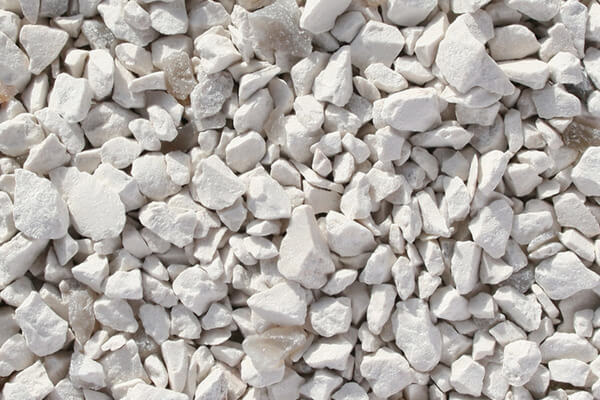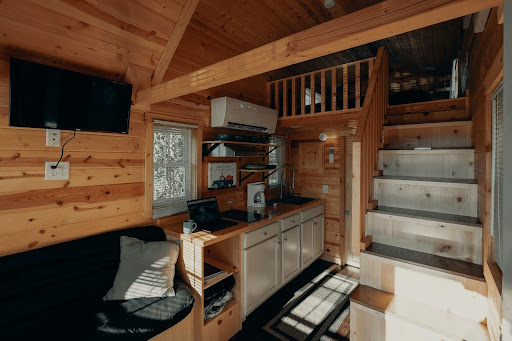
It can be intimidating to begin a limestone project. Depending on the size of the rocks you require, there are many grades of limestone to pick from. We’re here to walk you through your options for selecting a limestone grades. We use top-quality white limestone at Port Aggregates, which is as durable as grey limestone but weighs 10% less. This saves you money by allowing you to use less material to cover more space. You’ll also have the option of selecting a size range, which is where limestone gradations come into play.
The following variations are available in sizes ranging from 14” to 2”:
- Calica #57 (34 – 1”)
- Calica #89 (14 – 38”)
- Calica #458 (58 – 2”)
- Calica #610 (Powder – 12”)
- Calica #689 (12 – 58”)
- Kentucky (1 – 4”)
- Kentucky (#57, 34-1”)
- Kentucky #610 (1 – 12”)
- Crushed Concrete #610 (Powder – 12”)
Crushed limestone works well as the top layer of a concrete driveway when mixed with aggregate concrete mixtures. Certain large grades, such as our #2 12 OG, can be covered with #57G and topped with a finer grade, such as #8G limestone, beneath the top layer. #8G crushed limestone can also be used as an aggregate for asphalt driveways, as part of a drainage system to run water off your property (38 – 12 inch), or as a decorative accent around plants and other natural components.
If you want a loose-top driveway, choose a larger, denser grade (up to 12 inches), such as our road gravel or crushed concrete. For the top of a levelled driveway, this is a low-maintenance option. Our larger grade rip rap (crushed limestone) #1x4G is perfect for preventing erosion on a hill, slope, or pond bank, and is often put over a textile. As bedding, a finer grade might be employed beneath this. Rip rap can also be used to create low-lying or plant dividing barriers.
Because of its finely crushed texture, pea gravel is commonly used for walkways and gardens. Crushed limestone in larger grades, such as #57G, is commonly utilized as a base layer for these walks or as a landscape filler to surround paving stones. Whatever grade you require for your limestone project, we have it. To get started, submit a quote request today!

Crushed stone is a flexible commodity with a wide range of applications, from paver base material to landscape decoration. If you’ve ever worked with crushed stone, you’ve probably noticed that it comes in a variety of grades (sizes). These grades are based on the size of the stone after it has been crushed, and they tell you which uses the stone is most suited for. It’s vital to keep in mind that some gradations will have a variety of stone sizes within them. Individual stones ranging in size from 1” to 12” may be included in a CA11 or CA7 (usually 34”) gradation.
It’s helpful to understand the different grades of crushed stone when you’re out shopping. The following information will provide you a rough idea of what materials are available to help you choose the correct one for your project.
Crushed stone is the largest of the crushed stone grades, ranging from 2-4 inches in size. This material is ideal for bigger projects or filling in bigger holes. Ranges in size from 1/2 to 2 inches. This material is ideal for railroad applications as well as those requiring drainage. This category covers stones with a diameter of one inch or less. This material is ideal for paver and road bases. This category contains stone that is 3/8” to 12” thick. This is the most widely used stone in concrete mixtures.
Read More About: 10 Types of Construction Sand
Screenings or dust is a type of crushed stone #10. Pavers and concrete blocks are made from this material. Crushed stone #57 is a 34” stone that has been crushed. Concrete mix, landscaping, and drainage are all examples of where this is used. Crushed stone #67 is defined as stone with a diameter of 34 inches or less. This material is ideal for road and slab foundations, as well as fill.
Crushed limestone is a calcium carbonate-based aggregate. The stone is mined and crushed to particular sizes before being utilized in a number of applications such as construction materials, drainage, concrete, backfill, and road bases. If you’ve ever worked with limestone, you’ve probably noticed that there are varying grades (sizes). These grades are used to determine the optimum stone for specific purposes and are based on the size of the stone after it has been crushed.

Different uses of different limestone grades
The following are some of the most typical uses for 1/2 inch limestone:
- Gravel for French drains
- Wells that are completely dry
- Stone for driveways and parking pads (typically as a top coat for small driveways)
- Smaller stone is required in concrete mixes.
- Drainage gravel is used to direct water runoff.
- Stone for the walkway
- Material for the subbase
The following are some of the most popular uses for 1 1/2 inch limestone:
- Sub-ballast for railroads
- The usage of industrial or heavy equipment, such as a construction entry, necessitates the installation of driveway stone / parking pad stone.
- Septic line foundation stone
The following are some of the most popular applications for 3 inch limestone:
- Material to fill in undercuts as a backfill
- Stone for the driveway’s foundation
- Construction entrances that have been stabilized
- The foundation stone for the parking lot
- Septic line foundation stone
- Erosion control and ground stabilization







